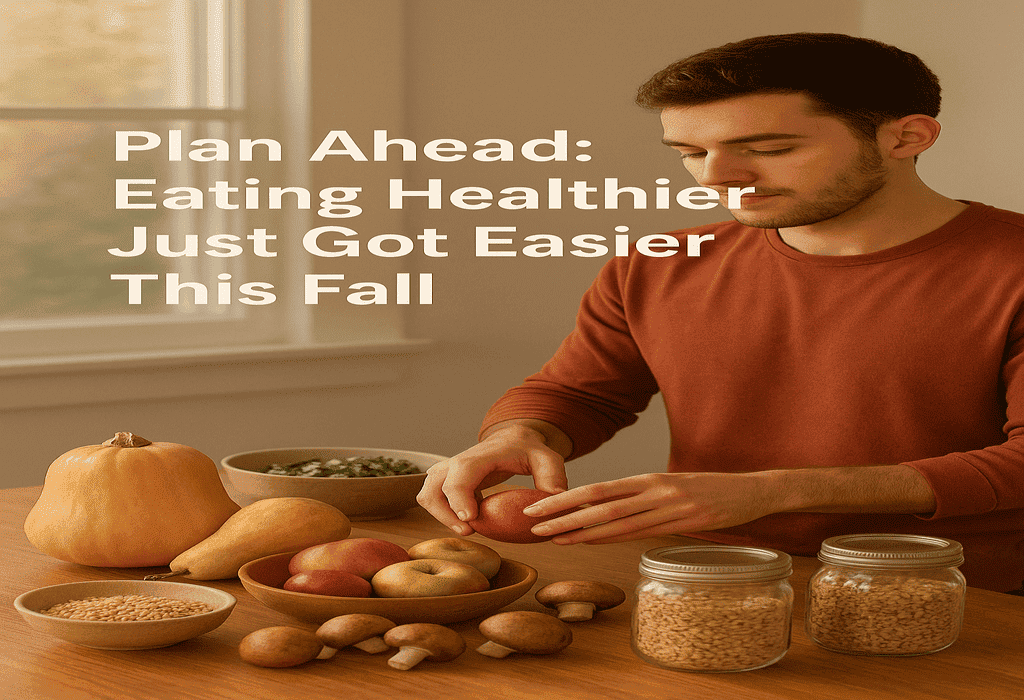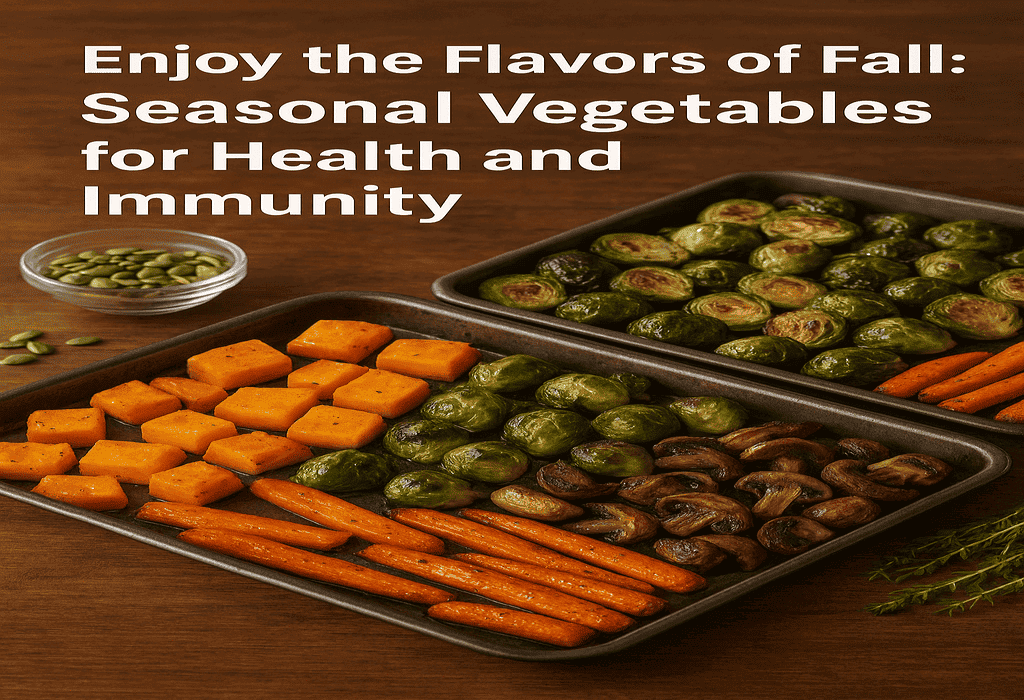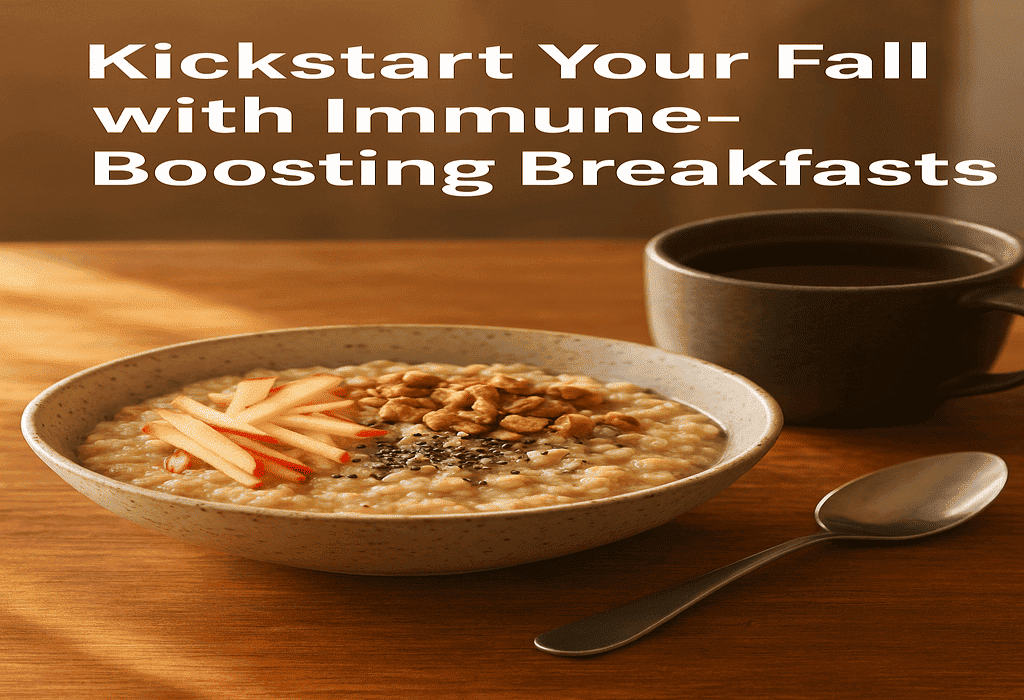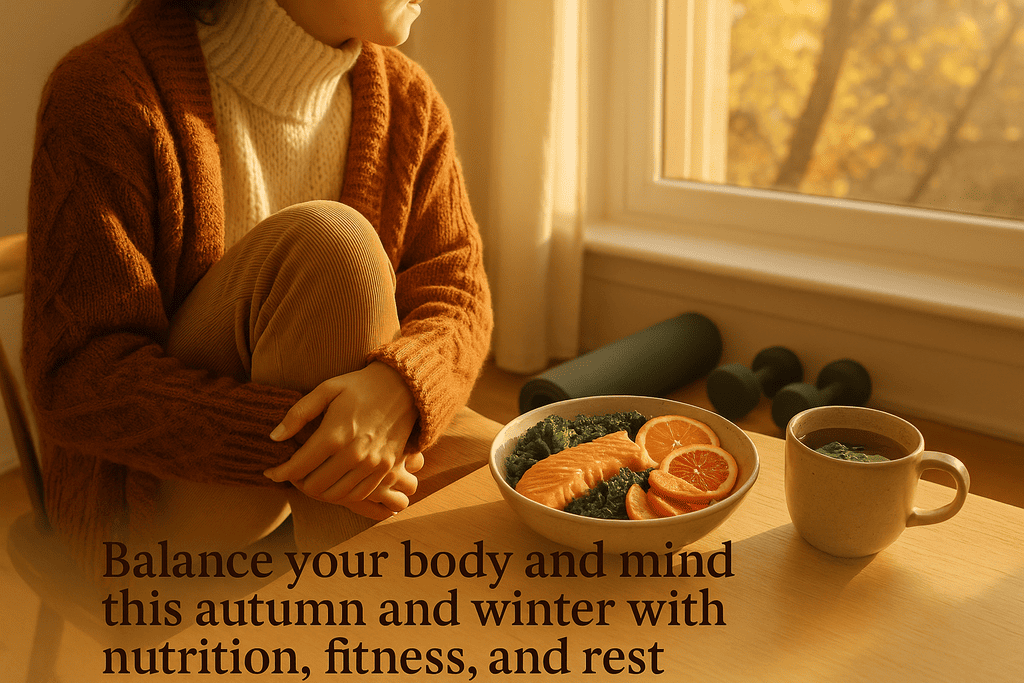
Introduction
As daylight shortens and temperatures dip, your body subtly shifts, too: circadian rhythms adjust, vitamin D status can decline, cravings tilt toward warm and hearty foods, and routines change with school and work schedules. Building healthy eating habits now helps you ride this transition smoothly—supporting immunity, energy, mood, and metabolism without losing summer’s momentum. This guide blends practical tips with up-to-date evidence from leading researchers and institutions in Asia, Europe, and the Americas, plus accessible references (including Wikipedia and major medical sources) so you can act with confidence.
Key Points (at a glance)
- Prioritize seasonal eating (apples, squashes, brassicas, mushrooms, legumes) to boost nutrients, fiber, and flavor while cutting cost and food waste. Healthline
- Protect vitamin D status as sunlight wanes; combine safe sun exposure, food sources, and (when needed) supplements under medical guidance. WikipediaPMCOxford Academic
- Lean into a Mediterranean-style pattern (plants, whole grains, legumes, nuts, olive oil, fish) for heart, brain, and metabolic health. Mayo ClinicCleveland ClinicWikipedia
- Use meal timing to your advantage (earlier dinners, consistent eating window) to align with circadian biology and glucose control. NaturePMCScience
- Feed your immune system and gut with beta-glucans (oats, barley, mushrooms), fermented foods, and diverse plant fibers. WikipediaPMC+1
- Hydrate intelligently, keep protein steady, and plan warm, high-fiber meals to satisfy without overshooting calories. The Nutrition Source
Body
1) Eat with the season to maximize nutrients and satisfaction
Fall produce is naturally tailored to cooler weather: squashes (butternut, pumpkin), apples, pears, beets, broccoli, cabbage, leeks, potatoes, Jerusalem artichokes, and crucifers in general. Seasonal eating often increases nutrient density, lowers cost, and encourages culinary variety that benefits the microbiome. HealthlineGlamour
Why it matters now: Diet quality changes by season in real life; recognizing this helps you choose better defaults during the fall transition. A large European cohort analysis documented seasonal shifts in food group intake and overall diet quality across the year. PMC
Action steps
- Make a short list of 5 fall staples you like (e.g., apples, kale, pumpkin, lentils, mushrooms).
- Batch-prep: roast trays of squash and crucifers, cook grains (farro, brown rice), simmer a lentil or bean pot.
- Keep a fruit bowl stocked with apples and pears to curb late-night sweets.
Evidence highlight: Pumpkin and other orange-fleshed squashes are rich in beta-carotene and vitamin C; dietitians widely recommend them for immune support and versatility in savory and sweet dishes. Real Simple

2) Shore up vitamin D as days shorten
By late summer into fall, many people drift into vitamin D insufficiency as UVB exposure drops. A 2023 global analysis reported substantial deficiency rates, including across Europe; expert consensus statements (2024) note wintertime deficiency remains common—even in sunny regions. Vitamin D supports bone health and has broad physiologic roles. PMCOxford Academic See also general background on vitamin D. Wikipedia
Action steps
- Aim for short, safe daytime light exposure when possible.
- Include dietary sources: fatty fish, fortified dairy/plant milks, and eggs.
- Discuss testing/supplementation with your clinician as fall advances and sun exposure declines. (Clinical guidance updates continue to evolve.) SpringerOpen
3) Embrace a Mediterranean-style base—then “fall-ify” it
The Mediterranean diet—rich in vegetables, fruits, whole grains, legumes, nuts, olive oil, and moderate fish/dairy—remains one of the most evidence-based patterns for long-term heart and metabolic health. Authoritative summaries from major U.S. academic medical centers (Mayo Clinic, Cleveland Clinic) and encyclopedic references underscore its benefits and food foundations. Mayo ClinicCleveland ClinicWikipedia
Fall twist:
- Swap summer tomatoes/cucumbers for roasted squash, braised greens, lentil stews, barley soups, and olive-oil-roasted brassicas.
- Keep extra-virgin olive oil as the primary fat and rotate nuts (walnuts, almonds) and seeds (pumpkin seeds) for crunch, minerals (e.g., magnesium, zinc), and satiety.
4) Align meal timing with your body clock
Shorter days often mean earlier dinners are easier to achieve. Randomized trials and mechanistic studies show benefits for early time-restricted eating (eTRF) and daytime-biased meal timing—including improvements in insulin sensitivity, weight, blood pressure, and glucose tolerance when meals occur earlier or within a consistent window. NaturePMCMass General BrighamScience Reviews further connect circadian rhythms with metabolic function and mood. PMCHMS Harvard
Action steps
- Finish dinner ~3 hours before bedtime on most nights.
- Keep a consistent 12–10 hour eating window that starts with daylight (e.g., 8 a.m.–6 p.m.) a few days per week.
- Pair earlier dinners with a 10–20 minute walk to aid glucose handling.

5) Feed immunity and the gut: beta-glucans, fiber, and fermented foods
As respiratory-virus season approaches, it’s smart to emphasize immune-supportive food patterns. Beta-glucans—soluble fibers in oats, barley, and edible mushrooms—have immunomodulatory properties. Randomized trials (Europe, Asia) and reviews report that mushroom- or oat-derived beta-glucans can beneficially influence immune markers and may reduce respiratory infections in some populations (though results vary by source and dose). PMC+1MDPIScienceDirect See background on beta-glucan and oat β-glucan. Wikipedia+1
Action steps
- Start the day with oatmeal or oat-bran porridge (add apple, cinnamon, walnuts).
- Add mushrooms (shiitake, oyster, cremini) to stews and omelets.
- Include fermented foods (yogurt, kefir, sauerkraut, kimchi) several times per week for microbial diversity—an easy way to complement fiber’s prebiotic effects. (General dietary guidance: Harvard T.H. Chan Nutrition Source.) The Nutrition Source
6) Keep protein steady; choose warm, high-fiber comfort
Colder evenings drive us toward comfort foods. You can satisfy that pull with high-fiber, protein-balanced bowls that stabilize appetite and support muscle maintenance:
- Protein targets: include a source (eggs, fish, legumes, tofu, yogurt) at each meal.
- Build bowls: roasted squash + lentils + sautéed greens + tahini/lemon; barley + mushrooms + white beans + olive oil; farro + salmon + broccoli.
- Smart starch: choose whole-grain bases or potatoes cooled and reheated to increase resistant starch, which may support glycemic control. Glamour
7) Hydrate and mineralize
Fall’s dry air increases water loss even as you sweat less. Keep a bottle handy and flavor water with citrus, apple slices, or ginger. Broth-based soups deliver electrolytes and potassium from vegetables. For many people, tea (green, black, herbal) adds polyphenols and warmth without excess calories. General dietary hydration guidance aligns with healthy pattern recommendations from Harvard’s Nutrition Source. The Nutrition Source
Table: Fall Pantry Upgrades for a Seamless Transition
| Category | Summer Go-To | Fall Upgrade | Why It Helps | Quick Prep Idea |
|---|---|---|---|---|
| Breakfast grain | Cold overnight oats | Warm oat-bran or steel-cut oats | Higher beta-glucans support satiety & immune function | Oats with apple, walnuts, cinnamon |
| Leafy base | Romaine | Kale or collards | More robust texture and micronutrients for braises | Kale + white beans + garlic & EVOO |
| Fruit snack | Berries | Apples/pears | Fiber (pectin), polyphenols, portability | Slice with nut butter |
| Soup/salad add-in | Cucumber | Mushrooms | Beta-glucans; umami boosts satisfaction | Roast mushrooms; add to barley soup |
| Main starch | White rice | Barley/farro | Chewier texture; fiber for glycemic control | Farro pilaf with leeks & herbs |
| Protein | Grilled chicken | Lentils/tinned fish | Iron, omega-3s (fish), eco-friendly | Lentil stew; sardines on toast |
| Fat | Mayonnaise | Extra-virgin olive oil | Mediterranean heart benefits | EVOO drizzle on roasted veg |
| Crunch | Chips | Pumpkin seeds | Minerals (magnesium, zinc) | Toast with paprika & lime |
Evidence threads for these choices: Mediterranean-style eating patterns; oat/mushroom beta-glucans; seasonal produce benefits. Mayo ClinicCleveland ClinicWikipediaPMC+1Healthline

A Simple, Fall-Friendly Eating Rhythm (Figure: “Daylight-Anchored Plate”)
- Morning (within 1–2 hours of wake): Protein + fiber + healthy fat
Example: Greek yogurt, oats, grated apple, walnuts. - Mid-day (biggest meal): Vegetables + whole grain + legumes/fish + EVOO
Example: Barley bowl with mushrooms, kale, white beans, pumpkin seeds. - Afternoon snack (optional): Fruit + protein
Example: Pear + cheese or hummus with carrots. - Evening (light, ≥3h before bed): Soup or veg-heavy plate + small protein
Example: Lentil-pumpkin soup; mixed greens; piece of whole-grain toast.
Why this works: Earlier/lighter dinners align with circadian biology and show advantages for glucose and blood pressure in controlled studies. Nature+1PMC
Science Corner: Recent Findings from Asia, Europe, and the Americas
- Asia / Middle East: A 2023 narrative review summarizes how early mealtime and circadian rhythms influence metabolic function—supporting earlier eating patterns as days shorten. PMC
- Europe: A real-world cohort (Netherlands) documents seasonal variation in diet quality, reinforcing a pragmatic focus on fall-appropriate staples. PMC
- Europe (RCTs): Controlled trials of time-restricted feeding and daytime eating show improvements in weight, glycemia, and cardiometabolic markers when meals are shifted earlier or confined to the daytime. PMCNature
- Asia & Europe (immune fibers): Randomized trials of mushroom β-glucans (e.g., Pleurotus, Ganoderma/Reishi) report immunomodulatory effects, with some studies noting fewer respiratory infections or reduced fatigue—though evidence is heterogeneous. PMC+1Nature
- Global/Americas: Harvard’s Healthy Eating Plate and related indices (AHEI) continue to guide fall food choices toward plants, whole grains, and healthy fats, emphasizing water over sugary drinks. The Nutrition Source+1
Sample 1-Day Fall Menu (balanced, Mediterranean-leaning)
- Breakfast: Steel-cut oats cooked with grated apple, chia, and plain yogurt; drizzle of olive oil or spoon of almond butter; tea or coffee.
- Lunch (largest): Warm farro bowl with roasted butternut squash, sautéed mushrooms, kale, white beans, and pumpkin seeds; side of citrus-dressed slaw.
- Snack: Pear and a small piece of aged cheese, or carrots with hummus.
- Dinner (light/early): Lentil & pumpkin soup; mixed greens with EVOO and lemon; slice of whole-grain toast.
- Hydration: Water across the day; evening herbal tea.
- Timing: Eating window ~8 a.m.–6 p.m.; finish dinner ≥3 hours before bed. Evidence suggests earlier timing supports glucose and cardiometabolic measures. NatureScience
Practical Fall Checklist
- Plan 2 soups/week (lentil-mushroom, minestrone with barley).
- Roast once, eat twice (sheet pans of squash, broccoli, carrots).
- Stock smart: oats, barley/farro, canned beans/lentils, tinned fish, olive oil, nuts/seeds.
- Vitamin D plan: brief midday light + food sources; discuss testing/supplements if needed. Oxford Academic
- Earlier dinners most nights; short after-meal walk. PMC
Conclusion
Transitioning from summer to fall is an opportunity—not a setback—for your health. Anchor your plate in seasonal plants, whole grains, legumes, nuts and seeds, and olive oil; protect vitamin D as daylight wanes; align meal timing with your circadian rhythm; and fortify immunity with beta-glucans and fermented foods. These steps synthesize robust findings from Asia, Europe, and the Americas and match real-world habits as seasons change. Start simple: choose five fall staples, set an earlier dinner, and cook one hearty pot each week. Your body—and your routine—will thank you when winter arrives.
References & Further Reading
- Vitamin D overview—encyclopedic background. Wikipedia
- Vitamin D prevalence & guidance: global/European deficiency estimates; expert consensus updates. PMCOxford Academic
- Mediterranean diet—clinical guidance & overview: Mayo Clinic; Cleveland Clinic; Wikipedia summary. Mayo ClinicCleveland ClinicWikipedia
- Seasonal eating & fall produce: medically reviewed fall produce list. Healthline
- Circadian meal timing & metabolic health: RCTs and mechanistic studies on early/time-restricted eating and daytime feeding. NaturePMCScienceMass General Brigham
- Beta-glucans & immunity: RCTs and reviews (mushrooms/oats); background pages. PMC+1MDPIWikipedia+1
- General healthy plate guidance: Harvard T.H. Chan—Nutrition Source. The Nutrition Source
(Note: Nutrition science evolves. The above integrates current peer-reviewed studies and reputable summaries as of August 26, 2025. For individualized advice, consult your healthcare provider.)







